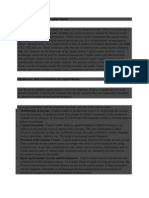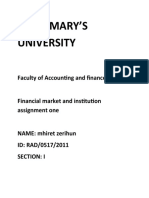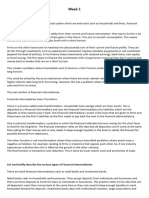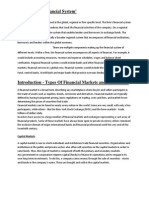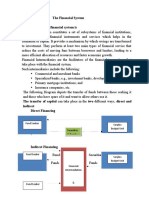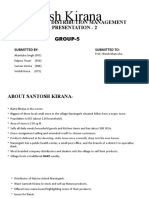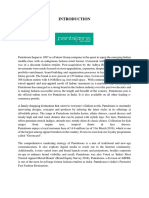0% found this document useful (0 votes)
52 views6 pages8th Batch Question
The document discusses several topics related to money markets, capital markets, and central banks vs commercial banks.
It provides definitions and key differences between money markets and capital markets, including that money markets are for short-term lending/borrowing up to 1 year while capital markets are for medium and long-term. It also discusses the main functions of financial markets including savings, wealth creation, liquidity, credit, payments, risk protection, and policy functions.
Finally, it contrasts central banks and commercial banks, noting that central banks are established by special government law and under government ownership to control the credit system and money supply, while commercial banks are established under banking law and can be under government or private ownership and their main
Uploaded by
mdkhairulalam19920Copyright
© © All Rights Reserved
We take content rights seriously. If you suspect this is your content, claim it here.
Available Formats
Download as PDF, TXT or read online on Scribd
0% found this document useful (0 votes)
52 views6 pages8th Batch Question
The document discusses several topics related to money markets, capital markets, and central banks vs commercial banks.
It provides definitions and key differences between money markets and capital markets, including that money markets are for short-term lending/borrowing up to 1 year while capital markets are for medium and long-term. It also discusses the main functions of financial markets including savings, wealth creation, liquidity, credit, payments, risk protection, and policy functions.
Finally, it contrasts central banks and commercial banks, noting that central banks are established by special government law and under government ownership to control the credit system and money supply, while commercial banks are established under banking law and can be under government or private ownership and their main
Uploaded by
mdkhairulalam19920Copyright
© © All Rights Reserved
We take content rights seriously. If you suspect this is your content, claim it here.
Available Formats
Download as PDF, TXT or read online on Scribd
/ 6






















